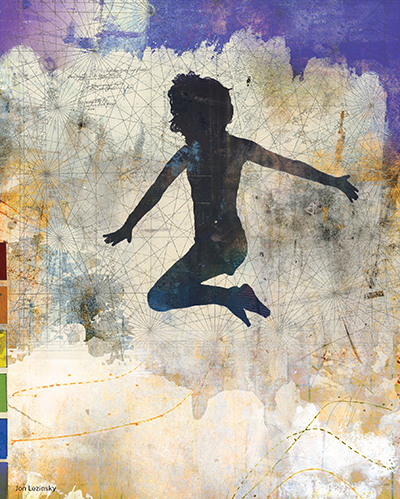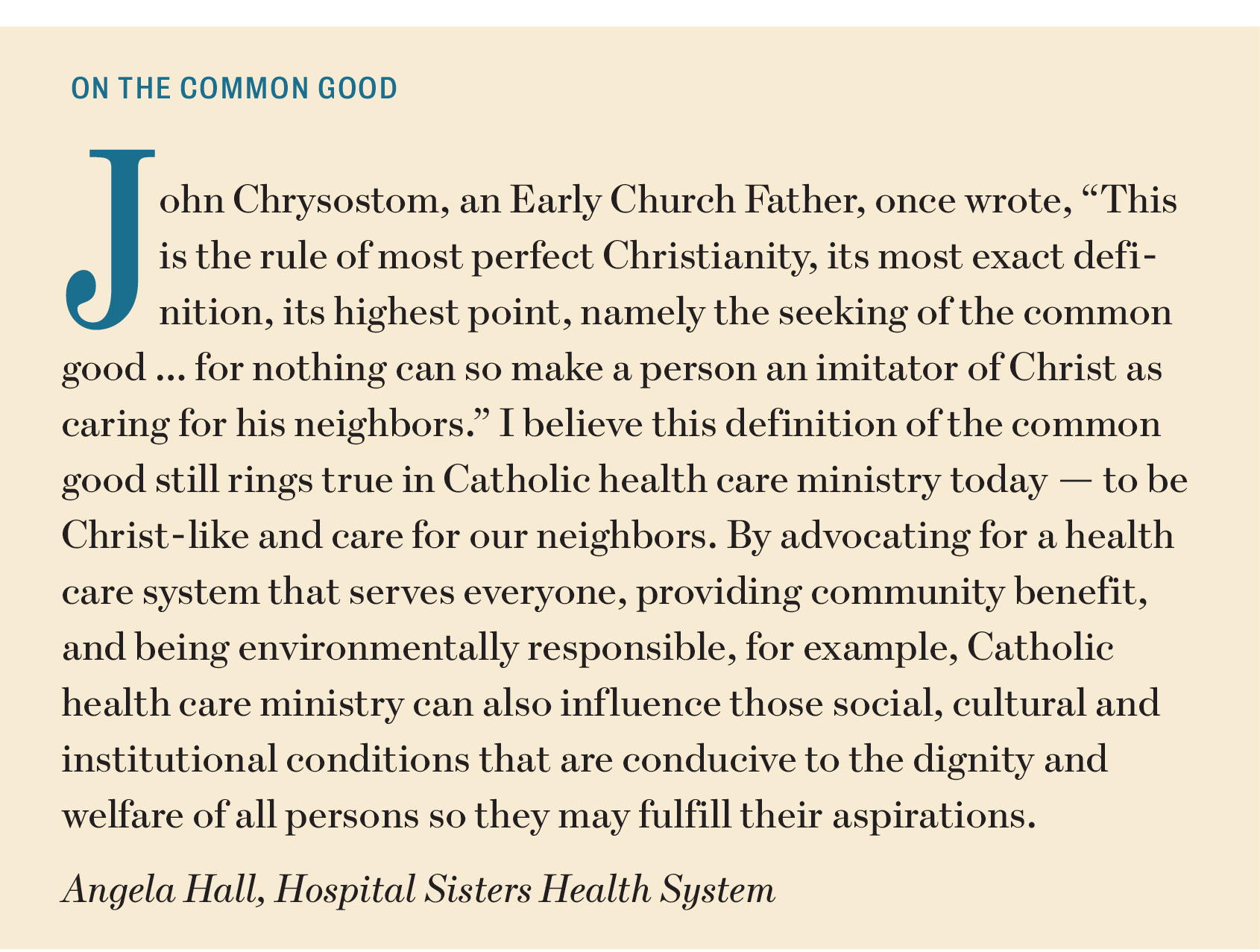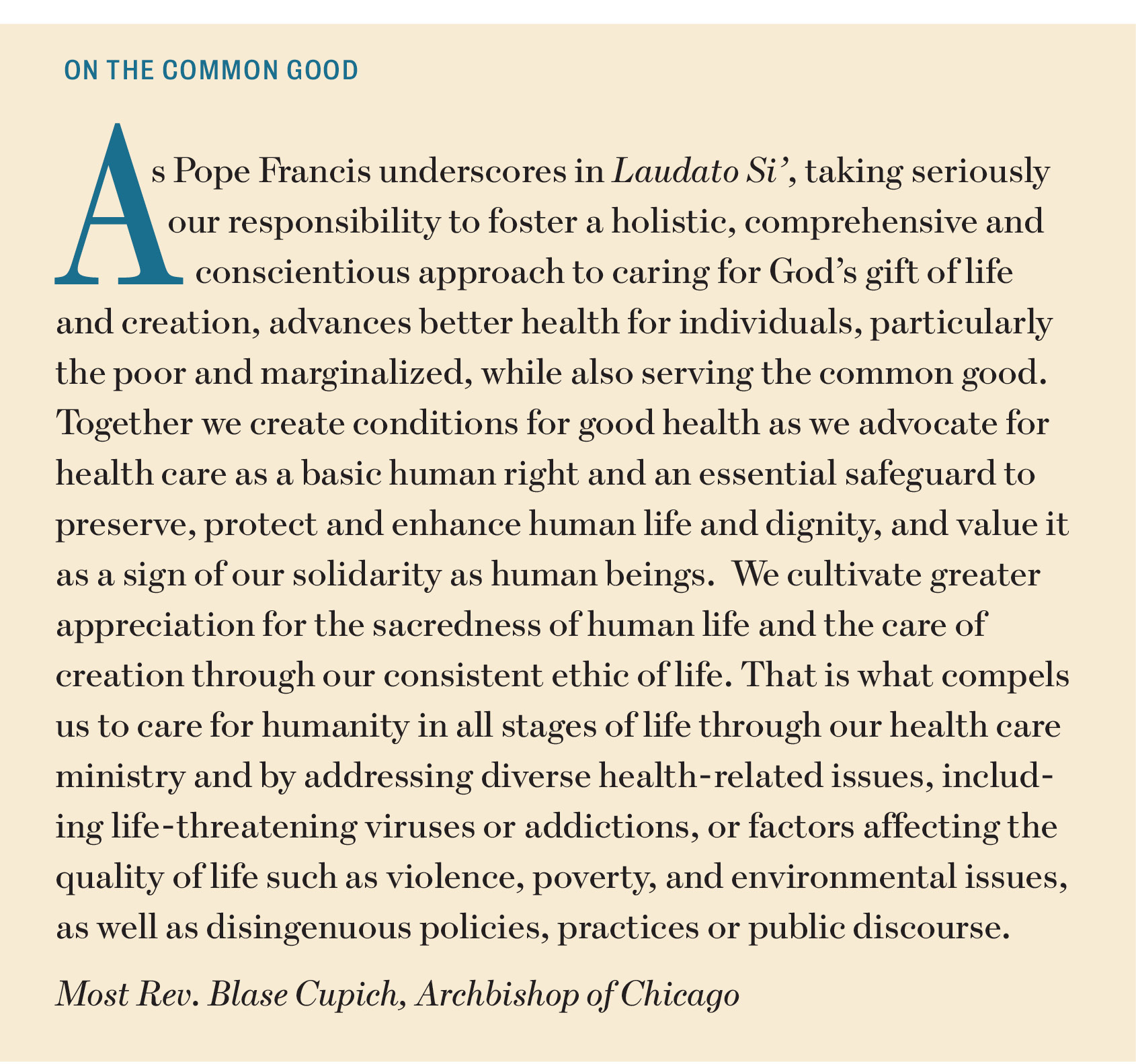BY: DEBORAH M. SPITALNIK, PhD
Convinced that the family is the natural and fundamental group unit of society and is entitled to protection by society and the State, and that persons with disabilities and their family members should receive the necessary protection and assistance to enable families to contribute towards the full and equal enjoyments of the rights of persons with disabilities…1

Jon Lezinsky
This tenet, taken from the United Nations Convention on the Rights of Persons with Disabilities, asserts a view of the common good for people with disabilities and their families. The assertions stand as a counterweight to a long and painful history of the ways that people with disabilities were misperceived, stigmatized and ill-treated. People with disabilities, particularly those with severe disabilities that began early in life, once were seen as "damaged" as well as damaging to their families. Prior to 50 years ago, the main resources available to such families were congregate institutions, separate from community life. For parents who had given birth to a child with Down syndrome or intellectual disability, it was not uncommon to be told by physicians or other health care providers: "Don't take him home — it will ruin your family." "Don't see her — don't hold her, just place her and go home and get pregnant again."
When a child with a disability is born now, through what has become the Individuals with Disabilities Education Act,2 our nation expresses to families: We value your child and your family. We will embrace your family through early intervention services; we will educate your child from preschool forward; and for young adults with disabilities, we will support your transition to a life of opportunity, meaning and contribution.
LEGISLATIVE HISTORY
The 1972 Children's Supplemental Security Income program provided income support and health insurance through Medicaid for children with disabilities or chronic illness living in families with limited incomes.3 The 1975 federal Education For All Handicapped Children Act guaranteed a "free and appropriate education" to children with disabilities.4 Coupled together, these two programs made it possible for many families to keep their children at home and raise them as part of their family and community. These programs and other forms of assistance and support, which we as a society contribute to or on behalf of our fellow citizens, are the expression of our commitment to the common good.
As of 2010, about 56.7 million Americans have impairments or functional limitations that are considered a disability.5 These range from conditions that originate in childhood, such as intellectual disabilities, autism spectrum disorder, epilepsy or cerebral palsy, to those that typically occur later in life, including Alzheimer's disease and stroke. Health conditions that are more broadly present across the adult life span, including arthritis, diabetes or heart disease, are considered disabilities if they are sufficiently severe to be incapacitating.
HEALTH, POVERTY AND INEQUITY
As health professionals, we tend to view disability primarily in the context of health conditions or disease entities. Disability often is construed as illness — and misconstrued as the opposite of health. The World Health Organization's International Classification of Functioning, Disability and Health emphasizes functioning and participation rather than an illness model.6 The Institute of Medicine also provides us with a social-ecological model for disability: "[D]isability is the expression of a physical or mental limitation in a social context — the gap between a person's capabilities and the demands of the environment."7
At the individual and the societal level, disability is inextricably tied to the world's largest challenges to the common good: poverty and inequity. People with disabilities represent the largest group of individuals living in poverty around the world. This perspective on disability is often unrecognized, even by those individuals and organizations deeply dedicated to remediating inequity and inequality, as Darren Walker, president of the New York-based Ford Foundation, noted on the philanthropic organization's "Equals Change" blog.8
In the United States, income status and disability often are intertwined, as are other forms of inequity and discrimination. Living in poverty increases the likelihood of having a child with a disability.9 Children with disabilities who are raised in poverty, even when they receive special education services, experience more adverse health, academic, behavioral, psychological and social outcomes than their economically advantaged peers with disabilities.10
Living with a family member with a disability also depresses family income. The extent of this effect mirrors other societal patterns, with both Latino families and African-American families who are living with disability having lower mean incomes than white families.11 Adults with disabilities are much more likely to be unemployed than those without disabilities (10.7 percent compared to 5.1 percent in 2015), and they are less likely to work full time (32 percent worked part time compared to 18 percent of workers without a disability).12
Issues of inequity also are highlighted by the rate of disabilities, especially mental illness and significant learning disabilities, reported in the prison population, which is disproportionately composed of people of color. Weaknesses in public education that do not address individual students' learning and behavioral needs have resulted in a "school-to-prison" pipeline that has its roots in early childhood. The common good is not served by children being expelled from preschool for behavioral disorders.

HUMAN RIGHTS PERSPECTIVE
In the context of the common good, disability must be seen from the perspective of human and civil rights. The civil rights struggles and achievements of other groups have laid the path, as well as modeled the structures, for the pursuit and realization of disability rights. Brown v. Board of Education, the 1954 landmark U.S. Supreme Court case focused on racial segregation, found that "separate education is not equal education."13 This created the subsequent framework of a "free and appropriate education" as a universal right for all children and the presumption towards inclusion in the education of children with disabilities with their nondisabled peers.
The Americans with Disabilities Act, signed into law in 1990,14 provides protections against discrimination on the basis of disability, as the Civil Rights Act of 1964 did for racial discrimination.15 Structured to eliminate discrimination in employment, telecommunications and public accommodations, the ADA speaks to the common good.
None of us is immune to becoming a person with a disability ourselves, or having a family member who has a disability. Even if we don't have particular risk factors, we are all vulnerable — from a stop light not heeded, a random genetic mutation, or the consequences of a virus such as Zika. We are the temporarily "abled." When people with disabilities are present in our communities and supported and accommodated, we all benefit. When a ramp is constructed as an accommodation for people who use a wheelchair, for example, we immediately see parents with strollers, as well as travelers with rolling suitcases, using the incline, too. Be it a ramp, individualized instruction for all children, or "smart" home technology that allows us to remain more independent as we age, "universal design" benefits the common good.
Although originally advocated to address the needs of people with disabilities, the provisions of the Affordable Care Act that prohibit insurance discrimination also benefit the common good.16 Eliminating insurance exclusions for pre-existing conditions has made it possible for people with disabilities to obtain health insurance, and family members with employer-based insurance can change jobs without risking coverage for a disabled family member. This protects all of us.
The elimination of annual and yearly "caps" on insurance coverage also mean that the birth of a child with extreme prematurity or serious disability doesn't have to represent dire economic challenges, in addition to the increased care and support service needs of the family. People with disabilities now have access to preventive care.
The ACA also addresses the common good by strengthening support for people with disabilities and older persons who want to remain living in their community, rather than having to move to a nursing home or other institutional setting to have their needs met.
As adults, people with disabilities live with their families more often and longer than do most other adults. This includes adults with lifelong developmental disabilities, but also adults with acquired disabilities, including traumatic brain injuries.17 For some families this is by choice, for others by necessity, because there are no options for out-of-home supportive community living. As the U.S. population ages, and longevity increases across generations, many families are now engaged in "compound caregiving," the term coined by researcher Elizabeth A. Perkins, PhD, to describe families who have been caring for their child with a disability and are now simultaneously caring for aged parents.18
UNCOMPENSATED CAREGIVING
People with disabilities also contribute to the common good. As parents of people with lifelong disabilities age, there are many instances of reciprocal caregiving, where the person with disabilities is providing significant care and support to the aging parent.19
Although considerable public resources are directed to a range of educational and support services for people with disabilities, Sue Swenson, acting assistant secretary for special education and rehabilitative services in the U.S. Department of Education, and Charlie Lakin, PhD, former director of the National Institute for Disability and Rehabilitation Research, have estimated the economic value of uncompensated caregiving by families to be $400-$500 billion per year.20
This economic contribution by families is three or four times greater than the dollar amount expended in government-funded services. If the uncompensated care were not provided, human and social services systems would collapse. Any perception that families of people with disabilities are a drain on society's resources belies a lack of understanding of how families living with disability contribute to the common good.
CONCLUSION
The increase in longevity for people with early onset disabilities, an increasing number of young adults with lifelong disabilities who are graduating from special education and the aging cohort of baby boomers will greatly increase both the need for caregiving and competition for caregivers. As these population trends emerge, there will be a relatively static supply of women aged 24-44 years old who traditionally would serve as caregivers.21 The demographics of the shrinking labor market may create a market demand for the employment of people with disabilities and opportunities to be contributors to the common good.
The vision of the common good in Catholic social teaching, "the sum total of social conditions which allow people either as groups or as individuals to reach their fulfillment more fully and easily," deeply resonates with the ethos of the disability movement.22 In seeing disability as a form of human diversity, the common good is served by the reciprocity between people with disabilities, families and our communities. We are inspired and uplifted by the ideal of the common good embedded in the preamble to the federal Developmental Disabilities Act:
"Disability is a natural part of the human experience that does not diminish the right of individuals with developmental disabilities to enjoy the opportunity to live independently, enjoy self-determination, make choices, contribute to society, and experience full integration and inclusion in the economic, political, social, cultural, and educational mainstream of society."23
DEBORAH M. SPITALNIK is professor of pediatrics and executive director of The Boggs Center on Developmental Disabilities at Rutgers Robert Wood Johnson Medical School, New Brunswick, New Jersey.
NOTES
- The United Nations, Convention on the Rights of Persons with Disabilities, 2006. Preamble, paragraph x. www.un.org/disabilities/convention/conventionfull.shtml.
- U.S. Congress, "Individuals with Disabilities Education Act 1990," Public Law 101-476.
- U.S. Congress, "Social Security Amendments of 1972," Public Law 92-603.
- U.S. Congress, "Education For All Handicapped Children Act of 1975," Public Law 94-142.
- U.S. Census Bureau, Americans with Disabilities: 2010 (P70-131). www.census.gov/people/disability/publications/sipp2010.html.
- World Health Organization, International Classification of Functioning, Disability and Health (Geneva, Switzerland: World Health Organization, 2001).
- Institute of Medicine, Disability in America: Toward a National Agenda for Prevention (Washington, D.C.: National Academy Press, 1991).
- Darren Walker, "Ignorance Is the Enemy Within: On the Power of Our Privilege, and the Privilege of Our Power," Ford Foundation Equals Change blog, Sept. 12, 2016. www.fordfoundation.org/ideas/equals-change-blog/posts/ignorance-is-the-enemy-within-on-the-power-of-our-privilege-and-the-privilege-of-our-power/.
- Glenn T. Fujiura and Kyoshi Yamaki, "Trends in Demography of Childhood Poverty and Disability," Exceptional Children 66, no. 2 (January 2000), 187-99.
- United States Department of Education, Twenty-fourth Annual Report to Congress on the Implementation of the Individuals With Disabilities Education Act, 2002. http://www.ed.gov/about/reports/annual/osep/2002/index.html.
- Glenn T. Fujiura and Kyoshi Yamaki, "Analysis of Ethnic Variations in Developmental Disability Prevalence and Household Economic Status," Mental Retardation 35, no. 4 (August 1997): 286-94.
- United States Department of Labor, Bureau of Labor Statistics, Persons with a Disability: Labor Force Characteristics — 2015 (news release, June 21, 2016). http://www.bls.gov/news.release/pdf/disabl.pdf.
- U.S. Supreme Court, Brown v. Board of Education of Topeka, 347 U.S. 483 (1954).
- U.S. Congress, "Americans with Disabilities Act of 1990," Public Law 101-336.
- U.S. Congress, "Civil Rights Act of 1964," Public Law 88-372, 78 Stat. 241.
- U.S. Congress, "Patient Protection and Affordable Care Act of 2010," Public Law 111-148.
- Deborah M. Spitalnik et al., A Statewide Needs Assessment of Persons with Brain Injury in New Jersey (New Brunswick, New Jersey: The Boggs Center on Developmental Disabilities, Rutgers Robert Wood Johnson Medical School, 2004).
- Elizabeth A. Perkins and William E. Haley, "Compound Caregiving: When Lifelong Caregivers Undertake Additional Caregiving Roles," Rehabilitation Psychology 55, no. 4 (November 2010): 409-17.
- Elizabeth A. Perkins and William E. Haley, "Emotional and Tangible Reciprocity in Middle- and Older-Aged Carers of Adults with Intellectual Disabilities," Journal of Policy and Practice in Intellectual Disabilities 10, no. 4 (December 2013): 334-44.
- Sue Swenson and Charlie Lakin, "A Wicked Problem: Can Governments Be Fair to Families Living with Disabilities?" Family Relations 63, no. 1 (February 2014): 185-91.
- United States Census Bureau, 2005 Interim State Population Projections. www.census.gov/population/projections/data/state/projectionsagesex.html.
- Pontifical Council for Justice and Peace, Compendium of the Social Doctrine of the Church (Washington, D.C.: United States Conference of Catholic Bishops, 2005).
- U.S. Congress, "Developmental Disabilities Assistance and Bill of Rights Act of 2000," Public Law 106-402.
